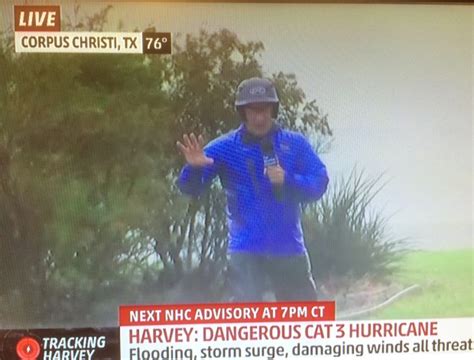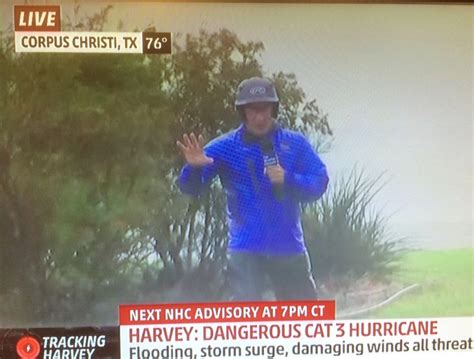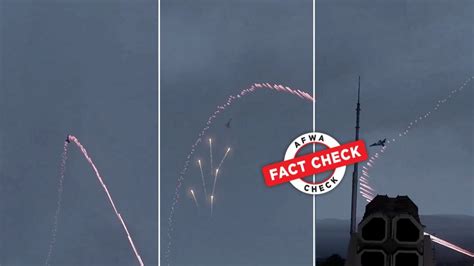
An image circulating online purporting to show a downed Israeli F-35 fighter jet is a digitally altered fabrication and not a genuine depiction of a recent incident, according to fact-checking investigations. The image, which has been widely shared on social media platforms, is misleading and unrelated to any actual event involving an Israeli F-35.
The claim that the image represents a downed Israeli F-35 has been thoroughly debunked by multiple sources, including investigations conducted by Reuters. These investigations confirm that the image is manipulated and does not depict a real aircraft crash. The dissemination of this fabricated image appears to be part of a disinformation campaign aimed at spreading false information.
The image in question typically shows a damaged aircraft, often with markings suggesting it belongs to the Israeli Air Force. It is often accompanied by captions claiming the jet was shot down in a conflict zone. However, metadata analysis and reverse image searches reveal that the image is not authentic.
While there have been no confirmed reports or evidence of an Israeli F-35 being shot down, the circulation of this manipulated image highlights the ongoing challenge of combating misinformation in the digital age.
Origins of the False Claim
The false claim originated and rapidly spread across social media platforms, often amplified by accounts known to disseminate unsubstantiated or fabricated information. These accounts frequently target geopolitical events and conflicts, using manipulated images and videos to influence public perception and potentially incite unrest. The image of the supposed downed F-35 gained traction within certain online communities, particularly those with pre-existing biases against Israel or the United States. The specific origins of the alteration remain unclear.
Debunking the Image
Several key factors contributed to the debunking of the image:
-
Reverse Image Search: Conducting reverse image searches on platforms like Google Images quickly reveals that the image has appeared in various contexts, often associated with unrelated events. This indicates that the image is not unique to the claimed incident and has likely been repurposed.
-
Metadata Analysis: Examination of the image’s metadata often reveals inconsistencies or alterations that point to manipulation. Metadata can contain information about the image’s creation date, location, and software used, which can be compared against official records and reports.
-
Lack of Official Confirmation: No credible news sources or official government agencies have reported any incident involving a downed Israeli F-35. The absence of such confirmation from reliable sources is a strong indicator that the claim is false.
-
Visual Inconsistencies: Experts in aviation and digital forensics have identified visual inconsistencies in the image that suggest manipulation. These inconsistencies may include unnatural lighting, blurring, or distortions that are not consistent with real-world conditions.
-
Expert Analysis: Aviation experts can often identify discrepancies in the aircraft’s appearance, markings, or damage patterns that are inconsistent with the characteristics of an F-35 or the typical aftermath of a crash.
The Danger of Misinformation
The circulation of false information, such as the image of the purported downed F-35, poses several risks:
-
Fueling Conflict: Misinformation can exacerbate tensions between nations or groups by promoting false narratives and inciting animosity.
-
Undermining Trust: The spread of false information erodes trust in legitimate news sources and institutions, making it more difficult for the public to access accurate information.
-
Influencing Public Opinion: Manipulated images and videos can be used to sway public opinion on important issues, potentially leading to misguided decisions or policies.
-
Creating Confusion: The sheer volume of misinformation online can create confusion and make it difficult for people to distinguish between fact and fiction.
The Role of Social Media Platforms
Social media platforms play a crucial role in both the spread and the debunking of misinformation. While these platforms provide a means for rapid dissemination of information, they also face challenges in combating the spread of false or misleading content. Many platforms have implemented fact-checking programs and content moderation policies to address this issue. However, the sheer volume of content being shared makes it difficult to identify and remove all instances of misinformation.
Government and Organizational Responses
Governments and organizations are increasingly focused on addressing the threat of misinformation. These efforts include:
-
Fact-Checking Initiatives: Supporting independent fact-checking organizations that investigate and debunk false claims.
-
Media Literacy Programs: Educating the public on how to identify and critically evaluate information online.
-
Legislation and Regulation: Developing laws and regulations to hold individuals and organizations accountable for spreading misinformation.
-
International Cooperation: Working with other countries to share information and coordinate efforts to combat misinformation.
The F-35: A Strategic Asset
The F-35 Lightning II is a fifth-generation fighter jet developed by Lockheed Martin. It is considered one of the most advanced and expensive military aircraft in the world. The F-35 is designed for a variety of missions, including air superiority, ground attack, and reconnaissance. Several nations, including the United States, Israel, and the United Kingdom, operate the F-35. It is a crucial part of Israel’s air defense capabilities, and reports regarding its status often attract significant attention.
Quote from Yahoo News:
According to a Yahoo News fact check, “The image doesn’t show a downed Israeli F-35 fighter jet. It’s a manipulated image being shared online.”
Conclusion
The claim that the image shows a downed Israeli F-35 is demonstrably false. The image is a digitally altered fabrication that has been debunked by multiple sources. The circulation of this image highlights the ongoing challenge of combating misinformation in the digital age and the importance of critically evaluating information before sharing it online.
Frequently Asked Questions (FAQ)
1. What is the origin of the claim that an image shows a downed Israeli F-35?
The claim originated and spread on social media platforms, often amplified by accounts known for disseminating unsubstantiated or fabricated information. The image was then circulated within online communities with existing biases.
2. How was the image debunked as being fake?
The image was debunked through several methods, including:
- Reverse Image Searches: Revealed the image had appeared in unrelated contexts.
- Metadata Analysis: Showed inconsistencies and alterations suggesting manipulation.
- Lack of Official Confirmation: No credible news sources or government agencies reported the incident.
- Visual Inconsistencies: Aviation and digital forensics experts identified unnatural lighting, blurring, and distortions.
3. What risks are associated with the spread of misinformation like this?
The spread of misinformation can:
- Fuel conflict between nations or groups.
- Erode trust in legitimate news sources and institutions.
- Influence public opinion based on false narratives.
- Create confusion and make it difficult to distinguish fact from fiction.
4. What role do social media platforms play in this type of misinformation?
Social media platforms facilitate both the spread and the debunking of misinformation. While enabling rapid dissemination, they also struggle to combat the volume of false content. Platforms implement fact-checking programs and content moderation policies, but challenges remain in identifying and removing all instances of misinformation.
5. What is being done to combat the spread of misinformation?
Governments and organizations are addressing misinformation through:
- Supporting independent fact-checking organizations.
- Implementing media literacy programs.
- Developing legislation to hold individuals accountable.
- International cooperation to share information.
Expanded Analysis and Context
The incident involving the fabricated image of a downed Israeli F-35 serves as a microcosm of the broader challenges posed by disinformation in the 21st century. The rapid proliferation of social media and online platforms has created an environment where false or misleading information can spread quickly and widely, often reaching a global audience within a matter of hours. This can have significant consequences, particularly in the context of geopolitical conflicts and sensitive international relations.
The Psychology of Misinformation
Understanding the psychological factors that contribute to the spread of misinformation is crucial for developing effective countermeasures. Several key psychological principles are at play:
-
Confirmation Bias: People tend to seek out and interpret information that confirms their existing beliefs, while ignoring or downplaying information that contradicts them. This can make individuals more susceptible to misinformation that aligns with their pre-existing biases.
-
Emotional Appeals: Misinformation often relies on emotional appeals, such as fear, anger, or patriotism, to capture attention and bypass critical thinking. Emotional content is more likely to be shared and remembered, even if it is inaccurate.
-
Social Influence: People are more likely to believe and share information that comes from trusted sources or is endorsed by their social networks. This can lead to the spread of misinformation within echo chambers, where individuals are primarily exposed to information that reinforces their existing beliefs.
-
Cognitive Biases: Various cognitive biases, such as the availability heuristic (relying on easily recalled information) and the bandwagon effect (following the crowd), can contribute to the acceptance and spread of misinformation.
The Technological Arms Race
The fight against misinformation is essentially a technological arms race. As fact-checkers and platform moderators develop new methods for identifying and removing false content, those who create and disseminate misinformation are constantly developing new techniques to evade detection. These techniques may include:
-
Deepfakes: Using artificial intelligence to create highly realistic but entirely fabricated videos or audio recordings.
-
Bot Networks: Deploying automated accounts to amplify misinformation and create the illusion of widespread support.
-
Sophisticated Disguise: Mimicking legitimate news sources or creating fake websites that appear credible.
-
Evasion Techniques: Circumventing content moderation policies by using coded language, subtle alterations, or distributed networks.
The Importance of Critical Thinking
In the face of this ongoing challenge, cultivating critical thinking skills is more important than ever. Individuals need to be able to evaluate information sources, identify biases, and distinguish between credible and unreliable content. This requires:
-
Source Evaluation: Assessing the credibility and reputation of the source of information. Is it a reputable news organization, a government agency, or a personal blog?
-
Fact-Checking: Verifying information with multiple sources and consulting independent fact-checking organizations.
-
Bias Awareness: Recognizing and accounting for personal biases that may influence the interpretation of information.
-
Skepticism: Approaching all information with a healthy dose of skepticism and questioning claims that seem too good to be true or that contradict established knowledge.
-
Media Literacy: Developing a broader understanding of how media operates and how information is produced and disseminated.
The Role of Education
Education plays a crucial role in equipping individuals with the critical thinking skills needed to navigate the complex information landscape. Schools and universities should incorporate media literacy and critical thinking skills into their curricula. This includes teaching students how to:
-
Identify different types of media and their purposes.
-
Analyze the credibility and bias of sources.
-
Evaluate evidence and arguments.
-
Distinguish between fact and opinion.
-
Recognize and resist manipulation techniques.
The Long-Term Impact
The long-term impact of misinformation on society is potentially profound. If left unchecked, it can erode trust in institutions, polarize public opinion, and undermine democratic processes. It is therefore essential to address the challenge of misinformation comprehensively and collaboratively, involving governments, social media platforms, educational institutions, and individuals.
Ethical Considerations
The fight against misinformation also raises ethical considerations. While it is important to remove false and misleading content from online platforms, it is also crucial to protect freedom of speech and avoid censorship. Striking the right balance between these competing values is a complex challenge.
The Future of Information Warfare
The fabricated image of the downed Israeli F-35 is just one example of the growing trend of information warfare. As technology continues to advance, the sophistication and effectiveness of disinformation campaigns are likely to increase. This poses a significant threat to national security, international relations, and the stability of democratic societies. Countering this threat will require a multi-faceted approach that combines technological innovation, policy reform, and public education. The situation calls for vigilance and a commitment to truth and accuracy in the face of increasingly sophisticated efforts to deceive and manipulate. The image’s virality, despite its falsity, demonstrates the power of visual disinformation and the urgency of addressing this issue.









